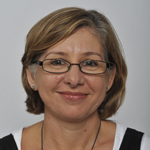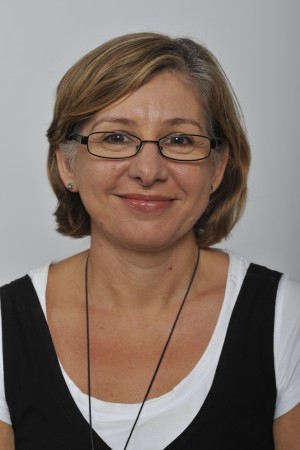
This is part of a series of articles showcasing the Sax Institute members’ diverse range of research with implications for future health policy and practice.
Clinical and Population Perinatal Health Research, Kolling Institute of Medical Research, The University of Sydney

A concerning upward trend in rates of postpartum haemorrhage in Australia has prompted researchers at Clinical and Population Perinatal Health Research to embark on research that has helped inform new guidelines aimed at reducing women’s risk of post-birth bleeding.
Associate Professor Jane Ford, ARC Future Fellow and Principal Research Fellow with Clinical and Population Perinatal Health Research at The University of Sydney, said that while blood transfusions were decreasing overall, there had been an increasing trend in post-partum haemorrhages and transfusions which was not explained by factors such as advanced maternal age or increasing caesarean rates.
One in 10 women
Around one in 10 women suffer excessive bleeding after childbirth and 15% of these women will have a red blood cell transfusion.
“This has implications for where women should give birth in a subsequent pregnancy and how they should be managed,” she said. “However, a disadvantage of routinely collected hospitalisation data is that we only know that a postpartum haemorrhage has occurred, not the severity.”
She said the team had extensive experience in using routinely collected statewide data, and had now established linkage with additional datasets that could add further value.
“With novel linkage to Australian Red Cross [Blood Service] and NSW Clinical Excellence Commission Bloodwatch data, we are able to better understand how many [blood] packs women are transfused,” Professor Ford said.
“We are trying to get a handle on whether there is more severe haemorrhage occurring”
The centre’s research was cited in the National Blood Authority’s draft Patient Blood Management Guidelines for obstetrics and maternity released in March this year as well helping to inform NSW Health guidelines and policies on Prevention, Early Recognition & Management of Postpartum Haemorrhage.
Professor Ford said the team had also co-authored research with NSW Kids and Families exploring variation in obstetric transfusion practices across NSW hospitals, and that research was now informing the development of role delineation guidelines which would guide birth in risk-appropriate settings.
“The guidelines will look at which services can best care for women of varying risk” she said.
“If a woman has had a haemorrhage with a previous birth, our work shows she has a 30% chance of going on to have another one and that impacts where she needs to be to give birth – perhaps in tertiary-level care with 24-hour access to a blood bank vs a rural hospital.”
Research projects
The centre currently has two research projects underway.
A study funded by an NHMRC Partnership grant with the NSW Clinical Excellence Commission and Australian Red Cross Blood Service to investigate adverse outcomes of maternal and infant transfusion and variations in practice across hospitals is close to completion.
“We are delving into why there is variation in transfusion rates across hospitals. Because blood donations are decreasing, as a precious resource and we need to ensure optimal use,” she said.
The centre recently gained another NHMRC Partnership grant with NSW Kids and Families and Australian Red Cross Blood Service to investigate health service utilisation and transfusion practices before and after the release of the new Patient Blood Management Guidelines.
“There is a strong move to make sure patients don’t get to the stage where they haemorrhage,” Professor Ford said. “Our research is helping to support that.”
The Sax Institute’s unique organisational structure, with 47 members from public health and health services research groups and their universities, connects us with a powerful public health network and world‑leading research expertise.
Find out more
- Find out more about Clinical and Population Perinatal Health Research
- Read about our other Sax Institute members
